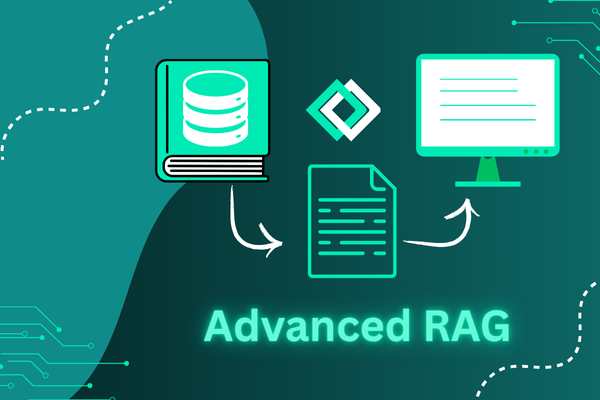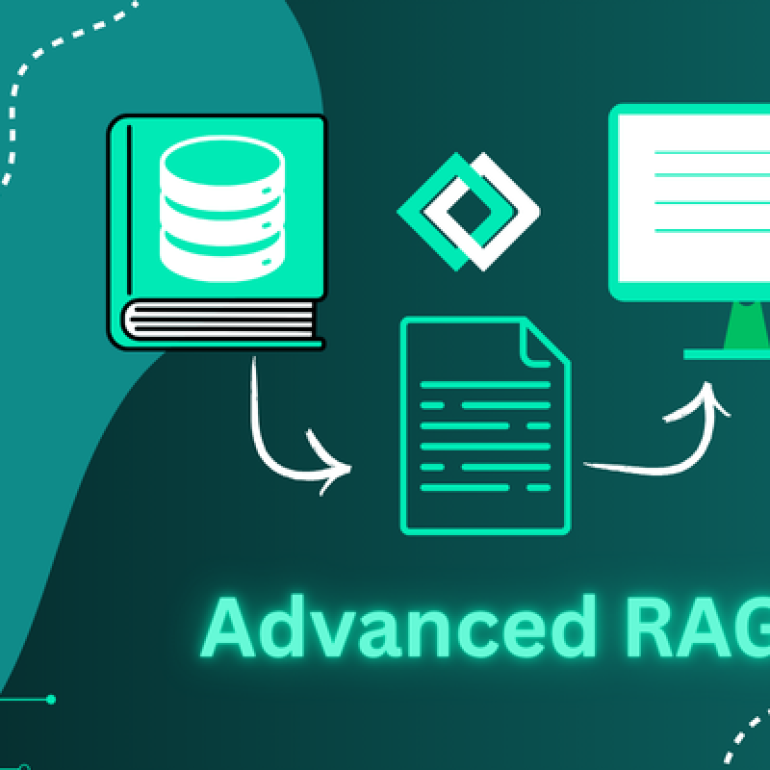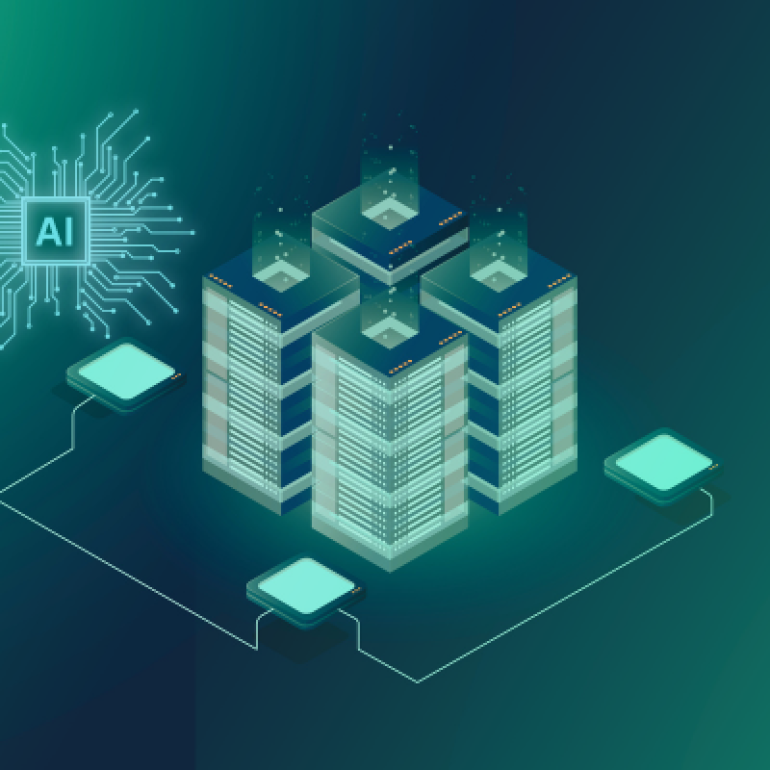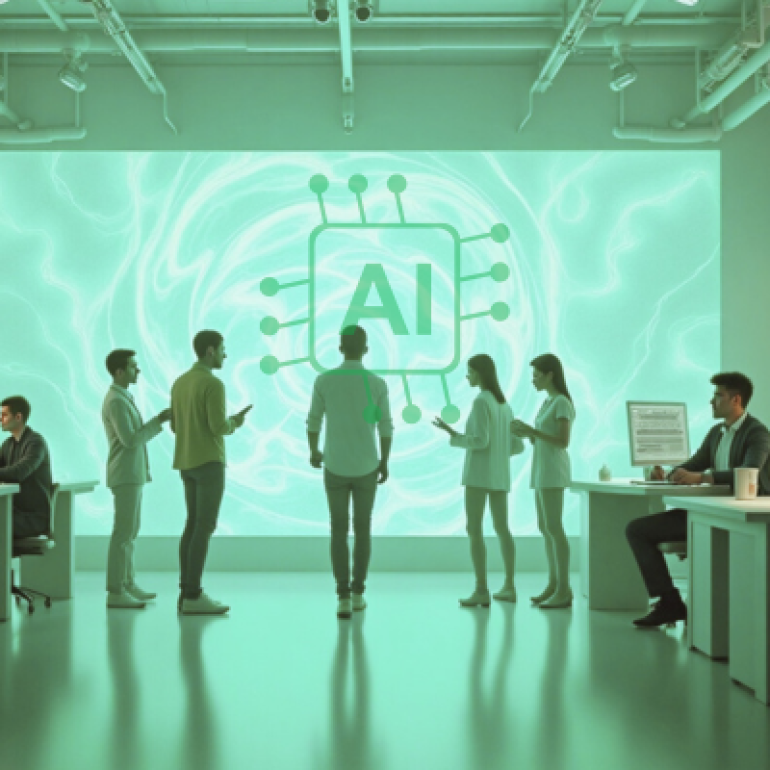- 29 July 2025
- Dr. Chandra Bondugula
Advanced RAG: Architecture, techniques, applications and use cases
Artificial Intelligence (AI) has made tremendous strides in recent years, transforming industries and enhancing our daily lives. However, even the most advanced AI systems face a core challenge: generating accurate, current, and contextually relevant responses.

Introduction
Artificial Intelligence (AI) has made tremendous strides in recent years, transforming industries and enhancing our daily lives. However, even the most advanced AI systems face a core challenge: generating accurate, current, and contextually relevant responses. Traditional large language models (LLMs) rely on static datasets, leading to hallucinations, missed context, and outdated information.
To overcome these limitations, the AI community has embraced Retrieval-Augmented Generation (RAG). This innovative technique enhances LLMs by allowing them to retrieve real-time information from external knowledge sources. In this blog, we’ll delve into what RAG is, explore different RAG architectures, and discuss how advanced RAG techniques are driving real-world applications, particularly in education, compliance-heavy sectors, and industries demanding precision.
Understanding Retrieval-Augmented Generation (RAG)
Retrieval-Augmented Generation (RAG) is a method that combines a language model with a retrieval system. Instead of relying solely on its training data, the model dynamically fetches relevant information from external sources such as vector databases, document repositories, or APIs. This enables the AI to produce answers grounded in real-time knowledge, which is invaluable in fast-evolving fields like education, architecture, medicine, or finance.
Traditional vs. RAG Models
Traditional Language Models:
Operate like closed books, generating responses based on embedded information from training. While fluent and coherent, their knowledge is frozen at the time of training.
RAG Models:
Act like researchers, actively searching for relevant documents or data before generating a response. This combination of search and generation reduces hallucinations, boosts accuracy, and enables greater flexibility in AI applications.
Exploring Different RAG Architectures
RAG systems come in various architectural forms, each designed for specific use cases. Let’s explore the most common types and their unique advantages and challenges.
1. Naive RAG
Naive RAG, also known as Native RAG, is the most basic version of this architecture. It retrieves a fixed number of documents and appends them to the model’s input. The model then generates a response using this expanded context.
While easy to set up, Naive RAG can be limited in both flexibility and depth. It may retrieve irrelevant documents, struggle to weigh the importance of each source, and perform poorly in complex tasks where nuance matters. Despite these limitations, Naive RAG serves as a foundational starting point for understanding how retrieval-augmented systems work.
2. RAG Sequence
RAG Sequence offers a more advanced approach by retrieving and processing documents in sequence. This setup allows for improved contextual integration, often with enhancements like query expansion or document reranking to ensure the most relevant data is prioritized.
RAG Sequence is particularly effective in tasks that require layered reasoning or explanation, such as educational content generation, policy analysis, or technical writing. However, the increased complexity of this architecture can make it more challenging to implement compared to Naive RAG.
3. RAG Token
RAG Token takes retrieval a step further by dynamically retrieving information at each step of the generation process. As the model generates tokens, it continues to query the database, adjusting and grounding its output in real-time. This results in highly accurate, domain-specific content, ideal for legal documentation, financial reports, or scientific summaries. The downside is that RAG Token requires more computational resources, making it resource-intensive but highly effective for precision-demanding applications.
4. Hybrid RAG
Hybrid RAG combines aspects of both sequence and token-based systems, allowing for modular pipelines that adapt retrieval strategies based on the task. This design offers flexibility and adaptability, making it useful in research, enterprise knowledge management, and any setting where the type of question or complexity may vary from case to case. Developers can build custom pipelines tailored to specific domains or performance goals, although the complexity of designing and optimizing such systems can be challenging.
5. Contextual RAG
Contextual RAG takes things one step further by incorporating additional layers of context, such as user history, preferences, or metadata. For instance, an educational AI assistant using Contextual RAG can tailor its responses based on the student’s progress, subject focus, or previous questions.
This makes the system not only more accurate but more engaging and personalized. The sophistication required for managing user context adds a layer of complexity, but the benefits in terms of user experience and engagement are significant.
Advanced RAG Techniques: Pushing the Boundaries
Modern RAG systems employ advanced techniques to enhance performance, scalability, and reliability. Here are some key innovations:
I. Dense Retrieval
- Description: It uses vector search to embed documents and queries into a shared vector space, enabling semantic matching.
- Benefits: Identifies relevant content based on meaning, even without exact phrase matches.
II. Query Expansion
- Description: Automatically enhances the user’s query with synonyms, related phrases, or domain-specific terminology.
- Benefits: Improves the quality of retrieval by ensuring the model works with the best possible information.
III. Modular Approach
- Description: Breaks the system into distinct stages, such as query generation, retrieval, reranking, and response generation.
- Benefits: Easier to optimize or swap out individual modules for different domains or performance goals.
IV. Corrective RAG (CRAG)
- Description: Introduces a feedback mechanism to initiate a new round of retrieval and response refinement if the output is weak or inaccurate.
- Benefits: Improves factual accuracy and reliability, crucial in fields like healthcare and finance.
V. Agentic RAG
- Description: Operates like a decision-making agent, deciding when to search more deeply, rephrase the query, or recheck sources.
- Benefits: Effective in multi-step reasoning tasks, such as business decision support or regulatory compliance.
Real-World Applications of RAG
Advanced RAG techniques are driving significant advancements across various industries. Let’s explore some key applications and use cases where RAG is making a tangible impact.
Education Technology
In the field of education technology, RAG is revolutionizing the way AI-powered tutors, curriculum designers, and learning assistants operate. These systems can now access up-to-date academic content, personalize learning pathways, and respond to students with accurate, well-sourced answers.
For example, a RAG-based assistant can pull content from recent journal articles, textbooks, or institutional materials to help a student understand a complex topic. This ensures that the information provided is current and relevant, avoiding the pitfalls of outdated or hallucinated responses.
Architecture and Construction
In architecture and construction, RAG systems are proving invaluable for retrieving relevant building codes, zoning laws, or material specifications based on location and project type. This is especially useful in ensuring compliance, speeding up proposal creation, or training new staff.
Instead of manually digging through regulation documents, professionals can interact with a system that delivers the right information instantly and in plain language. This not only saves time but also reduces the risk of errors and oversights.
Customer Service
RAG is also transforming customer service by powering virtual assistants that pull from product manuals, support tickets, or internal databases. These assistants provide accurate, human-like responses while maintaining consistency and compliance with brand knowledge.
For instance, a virtual assistant can help customers with accurate information about product features, troubleshooting steps, or order status, all while adhering to the brand’s tone and messaging guidelines.
Healthcare and Life Sciences
In healthcare and life sciences, RAG systems are being used to interpret clinical guidelines, summarize patient data, and support diagnostic decision-making. By pulling insights from news sources, research reports, and social media in real time, these systems help businesses identify trends and make informed decisions.
For example, a RAG-based tool can assist healthcare providers by summarizing the latest research findings on a particular condition, aiding in the diagnostic process and improving patient outcomes.
Building an Advanced RAG System: Key Considerations
Developing an advanced RAG system involves several critical steps, from data preparation to continuous refinement. Let’s explore the key considerations for building a robust and effective RAG system.
Data Preparation
The first step in building an advanced RAG system is proper data preparation. This involves gathering and cleaning content to ensure it is structured for efficient indexing. Creating embeddings for semantic search is also crucial, as it allows the system to identify relevant content based on meaning rather than keyword overlap. By preparing the data thoroughly, the system can retrieve information more accurately and efficiently.
Workflow Planning
A well-designed RAG system requires thoughtful workflow planning. Queries must be parsed accurately to ensure relevant information is retrieved. The retrieval process itself must be precise, and the generation of responses must integrate all relevant inputs without losing coherence.
After initial deployment, systems benefit from continuous refinement using user feedback, automated evaluations, or corrective loops like CRAG. This ongoing improvement ensures that the system remains accurate and relevant over time.
Scalability
Scalability is another essential consideration in building an advanced RAG system. As knowledge grows, the system must remain efficient and responsive. Techniques such as hierarchical indexing, microservices architecture, and asynchronous workflows can help manage growing complexity while keeping latency low. By designing the system with scalability in mind, it can handle increasing amounts of data and queries without compromising performance.
Conclusion: The Future of Practical AI
Advanced RAG techniques represent one of the most promising frontiers in artificial intelligence. They address real-world limitations that traditional models cannot, including hallucination, data freshness, and contextual nuance. By combining the creative fluency of large language models with the factual grounding of modern retrieval systems, RAG enables AI that is not just smart but truly useful.
Whether you’re building AI tutors for personalized education, compliance tools for architecture and construction, or knowledge systems for your enterprise, RAG offers a way to deliver precision, adaptability, and continuous improvement.
Ready to Build Smarter and More Trustworthy AI with RAG? Partner with SHC Technologies to build powerful Retrieval-Augmented Generation systems that deliver factual, real-time, and transparent answers.




